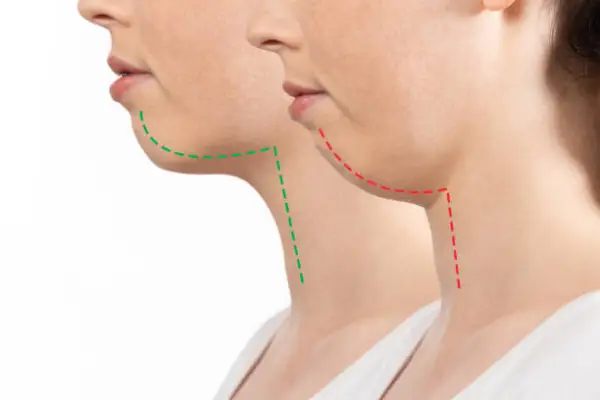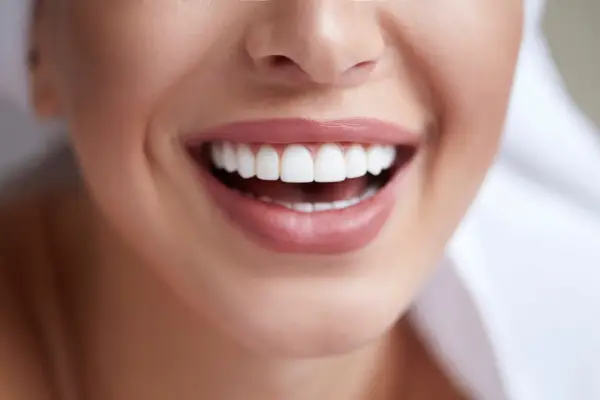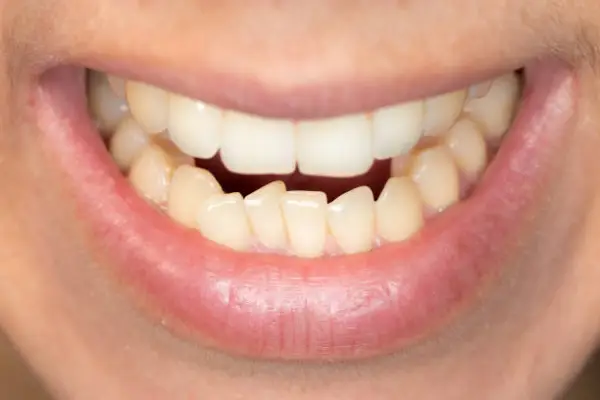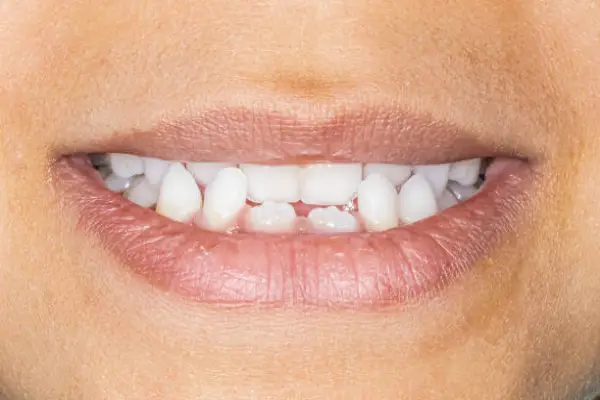Here, we offer helpful details to help you achieve and maintain excellent oral health. Here, we’re diving into the idea of malocclusions, which might seem complex, but it means the teeth and jaws are not lined up right; we also call them misaligned teeth.
Malocclusion is usually treated with orthodontics or braces and you should visit Orthodontist. Recognizing the various types of malocclusions is crucial for identifying potential dental issues and obtaining the correct treatment.
what is Malocclusion?
Malocclusion is a medical term for misaligned teeth. It occurs when teeth don’t fit together properly, leading to various problems. This can happen when teeth are overcrowded, spaced too far apart, or have an incorrect bite.

Can Malocclusion on overall health?
malocclusion can have a negative impact on overall health. While it’s often associated with cosmetic concerns, it can also lead to a variety of health issues.
Here are some potential consequences of malocclusion:
- Jaw pain and discomfort: Misaligned teeth can put stress on the jaw joints, leading to pain and discomfort.
- Difficulty chewing and eating: Malocclusion can make it difficult to chew food properly, leading to digestive problems and nutritional deficiencies.
- Speech difficulties: Misaligned teeth can affect speech clarity and pronunciation.
- Headaches and migraines: In some cases, malocclusion can contribute to headaches and migraines.
- Sleep disturbances: Malocclusion can cause jaw clenching or grinding, which can disrupt sleep.
- Self-esteem issues: Misaligned teeth can affect a person’s self-esteem and confidence.
If you have concerns about malocclusion, it’s important to consult with a Emergency Dentist or orthodontist for a proper evaluation and treatment plan.
What causes malocclusion?
Malocclusion, or bad bites, are typically caused by a combination of genetic and environmental factors. It’s important to note that malocclusion can often be a complex interplay of these factors, and the specific causes can vary from person to person.

What are malocclusion classes?
Malocclusion classes are classifications used to describe the different types of misaligned teeth. There are three main classes:
Class I Malocclusion
Class I malocclusion, the most usual type of teeth not lining up right, has a normal bite but with a little bit of overcrowding or gaps between the teeth. Even with a mostly normal bite, where upper teeth slightly cover lower teeth, people can have problems with how their teeth look or how well they work because teeth aren’t aligned properly.
Treatment options for Class I malocclusion include:
- Braces: you can fix overcrowding or gaps by straightening the teeth with braces.
- Clear Aligners: Offer an unnoticeable alternative to traditional braces, suitable for correcting minor misalignments.
Fixing Class I misalignment can improve oral health, enhance the smile’s appearance, and prevent future dental issues. Seeing an orthodontist early is suggested to figure out the best treatment plan.
Class 2 Malocclusion
Class II malocclusion, a common dental issue, is usually spotted by the upper jaw and teeth sticking out far over the lower ones, creating an overbite (a jaw too far back).
Fixing this teeth misalignment isn’t just about beauty; it can profoundly affect a person’s oral health and ability to use their mouth correctly.
The condition is categorized into two different subtypes, each presenting unique challenges:
Class II Division 1
This subtype is characterized by the upper teeth sticking out much farther than the lower teeth, making a noticeable overjet. People with this form of malocclusion may find it difficult to close their mouths entirely because of the strong sticking out, leading to issues with speech, increased risk of tooth damage, and difficulties in keeping the mouth clean.
Class II Division 2
In this case, the upper teeth are angled backward, overlapping the lower teeth even more. This can result in a deep bite, where the lower teeth come into close contact with the gum line behind the upper teeth. This could lead to the gums pulling back, tooth enamel getting worn down, and discomfort when biting or chewing.
Not treating Class II misalignment has consequences that are more than just cosmetic. You may experience a range of complications, including jaw pain, temporomandibular joint (TMJ) disorders, and difficulties in efficiently cleaning your teeth, which can lead to decay and periodontal disease.
Moreover, the misalignment can lead to unusual damage to the teeth and may even affect your confidence in social situations because of your misaligned smile.
How to Fix It
To fix Class II misalignment, you usually need a detailed orthodontic plan. Braces or clear aligners are commonly used to straighten the teeth and correct the bite. The treatment might also include devices like tools to broaden the upper jaw or assist in aligning the jaw to correct jaw differences. In more severe cases, where the jaw misalignment is noticeable, surgical options may be considered to reposition the jawbones to improve the bite and facial aesthetics.
Early examination and action are crucial in managing Class II malocclusion successfully. By getting an orthodontic check-up early, you can find the best treatment plans suited to their unique needs, possibly avoiding more complex treatments. With the right treatment plan, you can achieve a more pleasant bite, better oral health, and boosted confidence.
Class III Malocclusion
Class III malocclusion, or prognathism, occurs when the lower jaw goes beyond the upper jaw, causing an underbite. This misalignment can change how the face looks and complicate biting and chewing. Its treatment often includes orthodontics to correct teeth alignment and, for severe cases, orthognathic surgery to correct jaw positioning. Fixing Class III misalignment can improve oral functions, enhance facial appearance, and increase self-confidence. The early start of the treatment is crucial for the best results.

what are the types of malocclusion?
Malocclusion, or bad bites, can occur in various forms. Here are some common types:
Crossbite
A crossbite is a dental condition where upper teeth bite inside the lower teeth, which can occur on one or both sides of the mouth and impact the front or back teeth. This misalignment can cause unequal wearing down of the teeth, leading to potential issues such as tooth sensitivity, increased risk of cavities, and aesthetic worries. Also, a crossbite can make the jaw muscles work too hard and cause gum disease and bone loss if not treated.
Orthodontic treatments, including braces or clear aligners, are commonly employed to correct crossbites. For younger patients or cases involving a narrow upper jaw, a crossbite can make the jaw muscles work too hard and cause gum disease and bone loss if not looked after. Dealing with a crossbite early is essential to avoid long-term dental problems and guarantee a healthy and aligned bite.
Open Bite
An open bite occurs when there is a noticeable gap between the upper and lower teeth while the jaws are closed, often resulting from habits like thumb sucking or tongue thrusting or due to genetic factors. This dental condition can complicate biting and chewing and cause speaking problems, affecting oral health and functionality.
Treatment usually involves using devices for straightening teeth, such as braces or clear aligners, to gradually move the teeth into proper alignment. Additionally, methods to change habits may be necessary to correct the habits contributing to the open bite, like exercises to teach the tongue where to rest or tools to stop thumb sucking. Early interference prevents long-term complications and ensures a healthy, functional bite.
Overbite
Overbite is a malocclusion where the upper teeth overlap the lower teeth excessively. It can cause difficulty chewing, jaw pain, and speech problems.
Underbite
Underbite is a malocclusion where the lower teeth overlap the upper teeth excessively. It can cause difficulty chewing, jaw pain, speech problems, and facial appearance concerns.
Overcrowding
Overcrowding is a malocclusion where teeth are too close together. It can cause difficulty cleaning teeth, gum disease, and jaw pain.
Spacing
Spacing is a malocclusion where teeth are too far apart. It can cause difficulty chewing, speech problems, and facial appearance concerns.
Diastema
Diastema is a gap between the two front teeth. It can be a cosmetic concern and may affect speech or appearance.
Impacted Tooth
Impacted tooth is a tooth that is unable to fully erupt. It can cause pain, swelling, infection, and crowding of other teeth.
Missing Tooth
Missing teeth means a tooth that is absent. It can cause difficulty chewing, speech problems, and facial appearance concerns.
To sum up
It is critical to understand the types of malocclusions and their possible impact on your oral health. If you think you or someone in your family might have misaligned teeth, it’s important to consult with a dental professional. the best dentist in Vancouver At Dentist @ False Creek, committed to providing personalized care to address your unique dental needs. Early detection and treatment can improve outcomes and lead to a more beautiful smile.
In addition to addressing misalignments, our clinic offers a comprehensive range of services including dental implants for replacing missing teeth, teeth whitening for a brighter smile, dental veneers to enhance the appearance of your teeth, white fillings for a natural-looking restoration, and dental bridges to fill gaps caused by missing teeth.
We hope this blog has helped you understand the different kinds of teeth misalignments and what they mean. If you have any questions or would like to schedule a consultation, please don’t hesitate to contact us. Your path to a better smile begins now!
Contact Us:
Looking for a trusted dentist who understands your child’s dental needs? Our experienced dentists and caring staff are here to listen to your concerns patiently and provide you and your child with a wide range of specialized dental treatments and personalized attention in a stress-free, friendly, and welcoming environment. We believe that there is nothing more important than children’s health and happiness in the world!
Let’s create a shiny smile for your kid – book an appointment with Dentist@FalseCreeck today!
Doctor Consultation
Dentist @ False Creek Clinic in Vancouver to schedule an appointment and discuss your concerns with our experienced team.
Location
1681 Manitoba St Vancouver, BC V5Y 0B8
FAQ:
What are the three types of malocclusion?
The three main types of malocclusion are Class I, Class II, and Class III. Class I is the most common, while Class III is the rarest.
What is class 4 malocclusion?
There is no Class IV malocclusion. The three main classes of malocclusion are Class I, Class II, and Class III.
What is malocclusion 3 classes?
Class III malocclusion involves a protruding lower jaw, resulting in an underbite.
What is a Type 2 malocclusion?
Class II malocclusion occurs when the upper jaw protrudes forward, leading to an overbite or deep bite.

